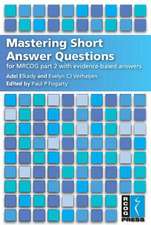Physics of Space Plasma Activity
Autor Karl Schindleren Limba Engleză Paperback – 21 apr 2010
| Toate formatele și edițiile | Preț | Express |
|---|---|---|
| Paperback (1) | 397.74 lei 6-8 săpt. | |
| Cambridge University Press – 21 apr 2010 | 397.74 lei 6-8 săpt. | |
| Hardback (1) | 629.57 lei 6-8 săpt. | |
| Cambridge University Press – 22 noi 2006 | 629.57 lei 6-8 săpt. |
Preț: 397.74 lei
Nou
Puncte Express: 597
Preț estimativ în valută:
76.11€ • 79.02$ • 63.47£
76.11€ • 79.02$ • 63.47£
Carte tipărită la comandă
Livrare economică 22 martie-05 aprilie
Preluare comenzi: 021 569.72.76
Specificații
ISBN-13: 9780521142366
ISBN-10: 0521142369
Pagini: 524
Ilustrații: 133 b/w illus.
Dimensiuni: 170 x 244 x 27 mm
Greutate: 0.83 kg
Editura: Cambridge University Press
Colecția Cambridge University Press
Locul publicării:Cambridge, United Kingdom
ISBN-10: 0521142369
Pagini: 524
Ilustrații: 133 b/w illus.
Dimensiuni: 170 x 244 x 27 mm
Greutate: 0.83 kg
Editura: Cambridge University Press
Colecția Cambridge University Press
Locul publicării:Cambridge, United Kingdom
Cuprins
Preface; 1. Introduction; Part I. Setting the Scene: 2. Sites of activity; 3. Plasma models; Part II. Quiescence: 4. Introduction; 5. Magnetohydrodynamic states; 6. Particle picture of steady states; 7. A unified theory of steady states; 8. Quasi-static evolution and thin current sheets (TCS); Part III. Dynamics: 9. Nonideal effects; 10. Selected macroinstabilities; 11. Magnetic reconnection; 12. Aspects of bifurcation and nonlinear dynamics; Part IV. Applications: 13. Magnetospheric activity; 14. Models of solar activity; 15. Discussion; Appendix 1. Unified theory: details and derivations; Appendix 2. Variational principle for collisionless plasmas; Appendix 3. Symbols and fundamental constants; References; Index.
Recenzii
Review of the hardback: 'This volume concentrates on one major topic of considerable theoretical interest … This is not a book for beginners! The two central sections of the book then represent in essence a coherent overview of the theoretical researches pioneered by the author and his colleagues at Ruhr-Universität Bochum over the past thirty years or so, combined with relevant results drawn from the work of others. … Overall, this is a very worthwhile work that coherently draws together a substantial body of research literature. It can be thoroughly recommended to those of a theoretical inclination for its rigorous but clear and physically-motivated treatment of a topic of central importance to the physics of large-scale plasmas in our Solar System, and most probably those beyond.' The Observatory
Review of the hardback: '… concise and easy to read … exhaustively referenced … Schindler's excellent monograph represents a rich and deep resource of elegantly presented information about the fundamentals of activity in space plasmas. This volume should be on the bookshelf of every researcher working to understand this complex phenomenon.' Journal of Plasma Physics
Review of the hardback: '…valuable…' Surveys in Geophysics
Review of the hardback: 'The subject is not only of inherent academic interest but also of practical relevance to human society at the start of the third millennium.' Surveys in Geophysics
Review of the hardback: '… concise and easy to read … exhaustively referenced … Schindler's excellent monograph represents a rich and deep resource of elegantly presented information about the fundamentals of activity in space plasmas. This volume should be on the bookshelf of every researcher working to understand this complex phenomenon.' Journal of Plasma Physics
Review of the hardback: '…valuable…' Surveys in Geophysics
Review of the hardback: 'The subject is not only of inherent academic interest but also of practical relevance to human society at the start of the third millennium.' Surveys in Geophysics
Descriere
This book provdes a detailed treatment of space plasma for graduate students and academic researchers in astrophysics and plasma physics.



